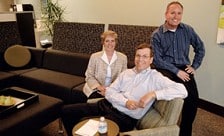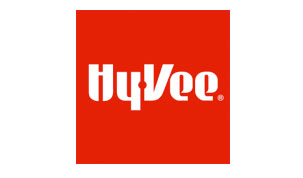Standing around at work

Employees are standing around at work, thanks to the adoption of new technologies that reflect changing attitudes about office environments.
Mechanized height-adjustable desks represent one innovation that a number of financial services firms are incorporating into their day-to-day operations in Greater Des Moines as a push toward sustainability reinforces the tendency of younger professionals to seek out modern spaces in which to earn a living.
Replacing traditional cubicles with newer systems intended to improve productivity and foster collaboration, Principal Financial Group Inc., Wellmark Blue Cross and Blue Shield and Aviva USA are among the companies trying out new products.
Last year, Aviva purchased from Workspace Inc. approximately 1,500 sit-stand workstations manufactured by Grand Rapids, Mich.-based Steelcase Inc. as the insurer settled into its new 360,000-square-foot corporate campus in West Des Moines.
Aviva’s new cubicles, which allow employees to raise or lower the height of otherwise stationary work surfaces with a touch of a button, are also defined by shorter walls, personal storage spaces and light-emitting diode illumination.
Wellmark, which also relocated in 2010 to an owner-occupied building downtown, purchased about 2,000 height-adjustable components made by Baker Manufacturing and attached to Herman Miller Inc.-made work surfaces, from Pigott Inc. at 3815 Ingersoll Ave.
The purchasing decisions made by those companies reveal a shift in how developers of non-competitive commercial real estate are working to cut costs as they usher in a new era of office design.
The buys also reflect a trend among environmentally conscious employers who are working to measure the benefits of Leadership in Energy and Environmental Design (LEED) certification as they bankroll sleek new furniture, fixtures and equipment.
Workspace Inc. is an authorized Steelcase distributor at 309 Locust St. in Des Moines.
“The two big drivers in the office environment right now are technology and a younger generation at work,” said Workspace Inc. partner John Kenworthy, adding that a greater number of companies are considering such products as they become more affordable.
Aviva, whose parent company, British-based Aviva plc, operates in 28 countries, wants to reduce its carbon footprint while attracting and retaining top performers. Health and wellness, long-term viability and overall employee satisfaction are also driving executive-level decisions to revamp traditional office settings.
“We worked through a plan where we tried to create a universal footprint that allows change while not disrupting the infrastructure,” said Mike Hartschen, Aviva’s director of buildings and facilities. “Really, what we were driving at was a cost savings over time.”
Both Aviva and Wellmark included a plethora of informal meeting spaces in their technology-laden buildings, which offer employees easy access to Internet connections and conference rooms as a way to encourage teamwork.
“If you look at the tail end of the X generation and the current Y generation, this is a whole culture that has grown up and been educated all around teams,” said Workspace Inc. partner Glenn Oberlin. “Their whole educational experience was around that.”
Principal, which in November purchased 212 workstations from Steelcase’s Answer product line, is also working to slash overhead costs as it installs equipment that makes it easier for employees to stand, stretch and interact with co-workers.
“For us, the main feature was the height adjustability,” said Jed Fisk, vice president of corporate services. “Over the long-term life of the furniture, it saves us money because we don’t have to pay someone to come in and make those height adjustments.”
Fisk said Principal’s first order of height-adjustable desks was part of the company’s internal “workplace of the future” campaign, which began in the mid-2000s, more than a decade after it erected Iowa’s tallest skyscraper at 801 Grand Ave.
The company, which put the program on hold as it made layoffs during the recession, is now refocusing its efforts to replace drab or outdated color schemes with fresh coats of paint and create impromptu meeting areas.
“What we are trying to do is reclaim that space so everyone has access to the views,” Fisk said of the perimeter office cubicles Principal has repositioned to let more natural light shine into interior offices and onto employees.
Principal has also standardized the layout and configuration of nearly 6,000 employee workstations, an initiative that Fisk said has saved the company money. “You really reduce your operation costs significantly,” he said.
Today, about 20 percent of the company’s downtown campus has been refashioned, Fisk said, noting that employee happiness has been a key goal of the company’s remodeling efforts.
“The whole concept behind the design of our showroom is really to kind of challenge the traditional way of thinking and get customers to think outside the box as to what the future has in store,” Kenworthy said of Workspace Inc.’s outlet at 309 Locust St. “Because attracting and retaining employees is going to be a key strategy for a lot of companies in the future as we come out of this economy, and they want to be the employer of choice.”
Oberlin said EMC Insurance Cos. at 717 Mulberry St. has ordered about 100 Steelcase workstations as part of the insurer’s pilot program to explore the sit-stand mechanisms. Dice Holdings Inc, which specializes in operating websites for job-seeking professionals, said it plans to replace its 65-inch cubicle walls with more than 200 Answer workstations when it relocates this fall to a leased 35,000-square-foot building at Aurora Business Park in Urbandale.
In March, Workspace Inc. incorporated office furniture from Steelcase’s c:scape product line on the second floor of its own shop. Doing away with cubicle walls altogether, the company now houses its nine designers in workstations similar to those they are paid to lay out for clients.
“We used it to create individual work settings in a smaller amount of space,” said Teri Crist, a Workspace Inc. vice president, referring to what the leaders call a traditional “Dilbertville” work environment. “We put people side by side just like they would be if they were surrounded by panels,” she said. “But they are in a more open environment.”
In January, The New York Times reported that the average amount of office space per employee nationwide has shrunk to 250 square feet from 400 square feet in 1985.
Aviva, Principal and Workspace each pointed to published reports or case studies that concluded that sit-stand workspaces allow for greater mobility and may have a positive effect on employee wellness.
And though employers must take care to think through how short walls and open spaces could lead to visual distractions or privacy concerns, meeting the expectations of a new generation of mobile-minded workers trumps those caveats.
“At the end of the day, if you’re putting them in an environment where they’re not productive or don’t like the workspace they’re in, are you really accomplishing anything?” Fisk asked. “The concept of the cubicle is about as attractive to those folks as driving mom and dad’s minivan.”











